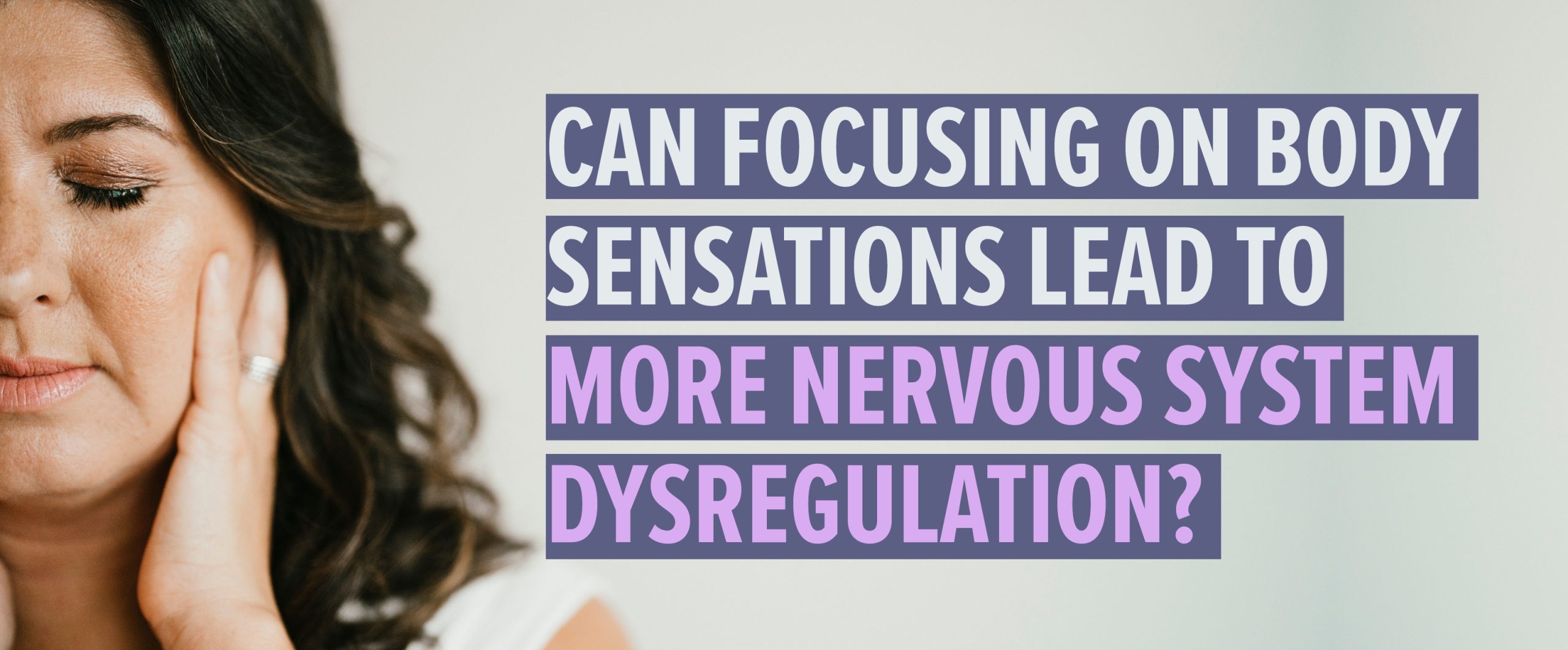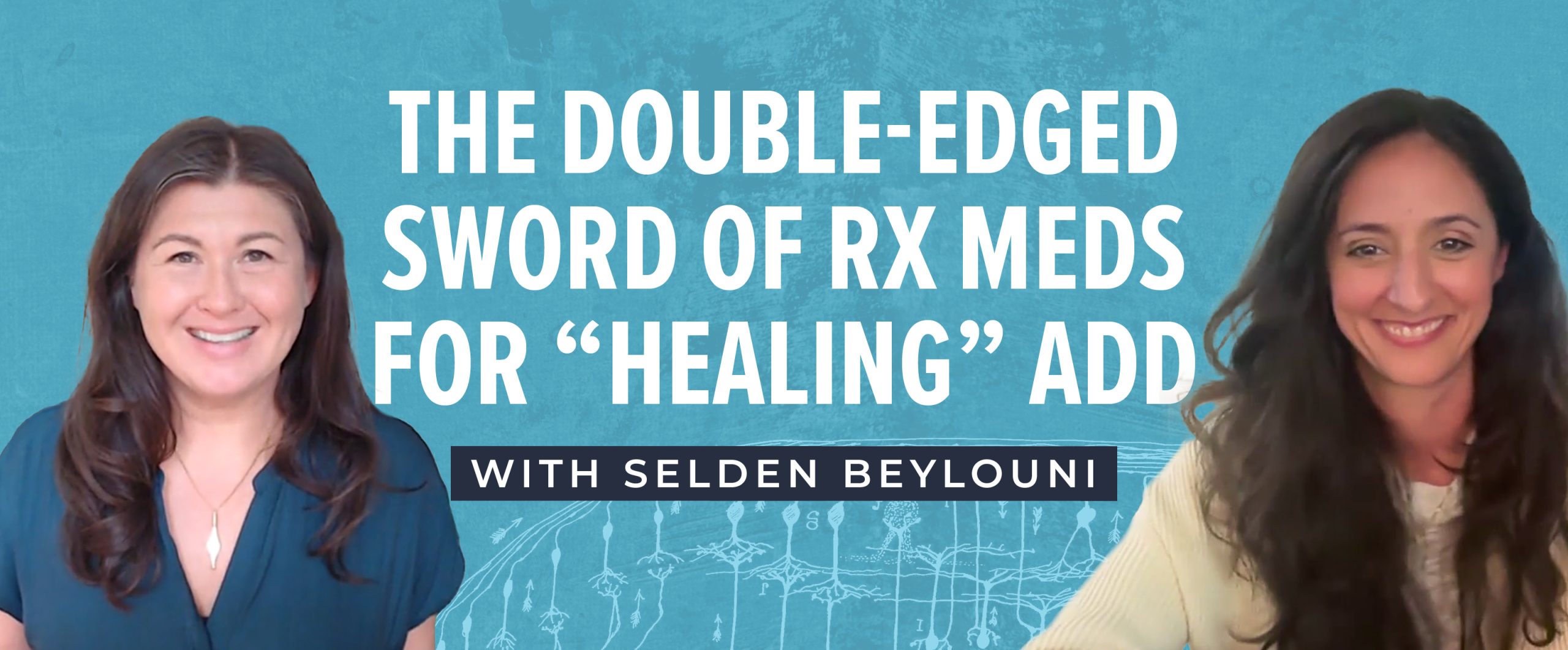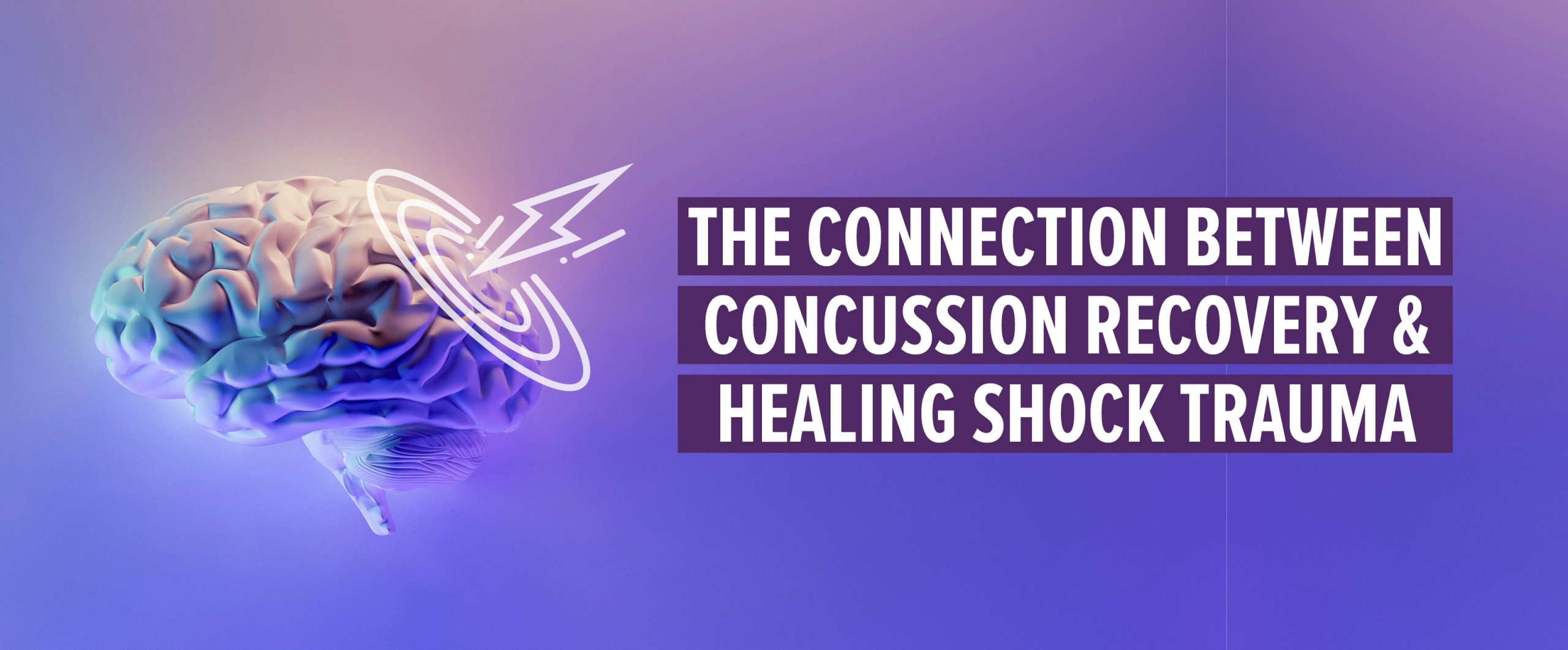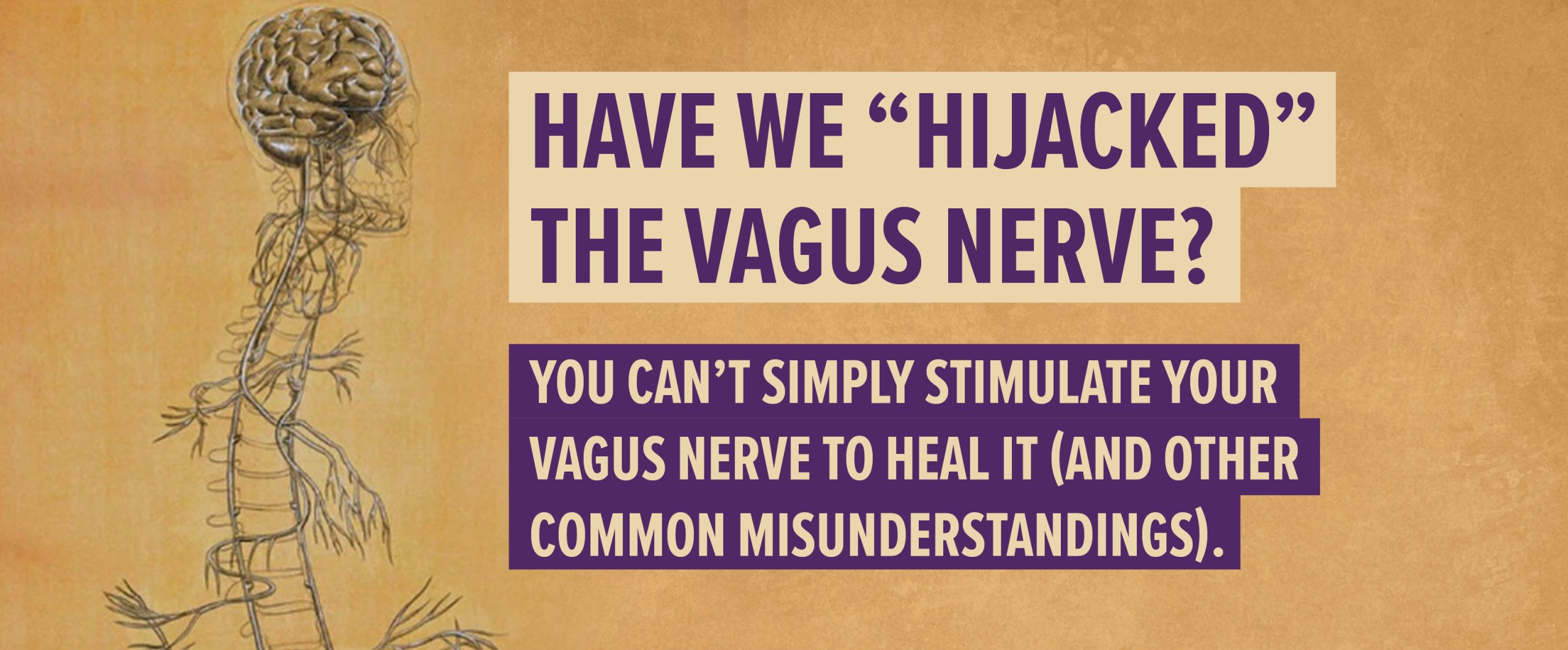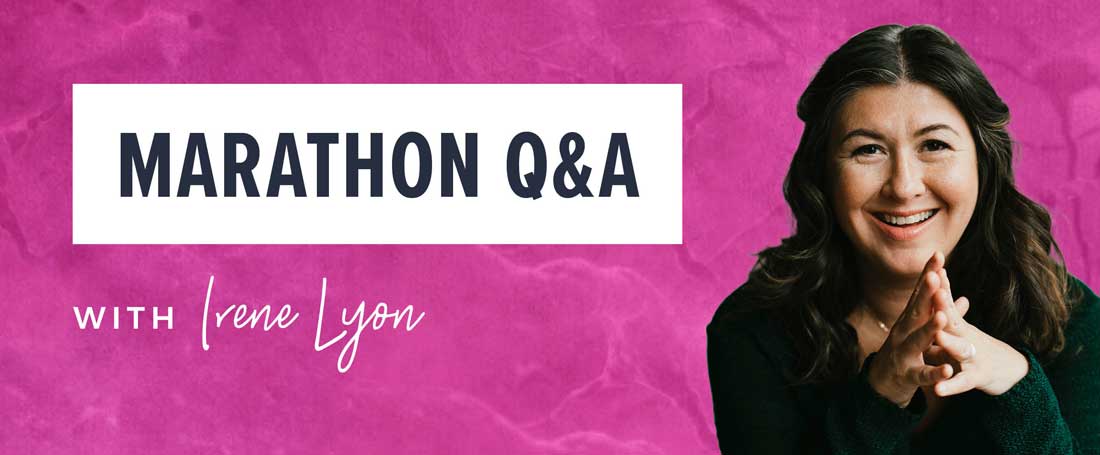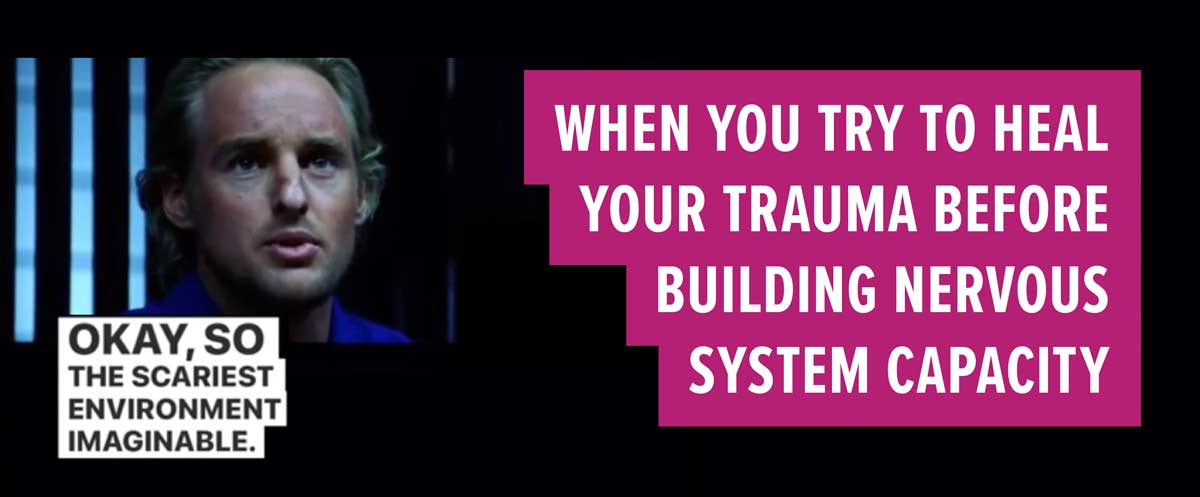.
You know that saying, ‘slow and steady wins the race’?
How about ‘less is more’?
Or this one, ‘quality over quantity’?
These phrases are top of mind right now as I share a new vlog that digs into a question posed to me the other day in our Facebook community, Healthy Nervous System Revolution.
The question had to do with the all too common reality of what happens when one does WAY too much in a somatic trauma healing session and the less than desirable after-effects that can result.
From my experience a person will do too much, too soon, for a few reasons:
- lack of, or inaccurate, psycho-education
- inadequate foundations on board to be with one’s body sensations, and/or
- a practitioner who does not have #1 and/or doesn’t know the signs of #2.
Because I’m a Somatic Experiencing Practitioner you might be wondering why I’m talking about the negative side-effects of processing stored traumatic stress?
I’m talking about it because while YES, we can feel some pretty intense stuff and even experience a string of physical symptoms while releasing stored traumatic stress, the way in which we enter into this process and prepare for it will make all the difference as to whether or not the traumatic stress is actually fully released, integrated and ‘healed’ – or, is shot back into the nervous system to be processed at another time.
* * *
The art and science of healing trauma
The art and science of healing trauma at the somatic, nervous system level is embryonic at best. Due to this newness, we have limited numbers of practitioners (worldwide) who have taken the time to FULLY study and practice at the levels I’ve found are pretty darn essential so one can not only be trauma-informed, but trauma-trained from a somatic, Polyvagal and neurobiological lens.*
The other thing to remember is not all nervous systems respond in the same way to trauma. This means each system must be treated differently. For this to happen the practitioner must be highly skilled, not only in the theory and practical know-how, but they must have a knack for pivoting on the fly with ease and neutrality so as to not disrupt a person’s sense of safety (or danger).
The practitioner must also have what I like to call, ‘a level of exquisite attunement’ to the client that is best cultivated by having solid intra-individual attunement to self (meaning, the practitioner is 100% connected to their own body and nervous system while working with their client, and also in their own life 24/7).
This is why it is IMPERATIVE that each client become educated to a high degree when it comes to nervous system science (more on that below), and that they do the foundational preparatory work so that when the traumatic stress is ready to surface and release it can be done in the best way possible: safely, easily and without massive disruption to the person’s psyche and physiology.
***
I want to paint a picture of the importance of preparation and foundational work that is non-healing related because it fits so well here
I saw the movie First Man last year.
Ryan Gosling played American astronaut Neil Armstrong. The movie was the story that led to his walk on the moon.
What struck me the most was the grueling training those astronauts went through so they could be prepared to launch into space. I mean, it was exhausting to watch (with my popcorn in a cozy movie theater) so I cannot begin to imagine what it might have been like in real life!
But that physical rigor and repetition happens for a reason.
They need to have solid foundations wired into them so they can be prepared for ALL possible situations, even the unexpected. Let’s face it, we can’t just plunk anyone into a space shuttle, launch them into orbit, expect them to be ok physically and mentally, and also expect them to know how to maneuver and operate all the bells and whistles that come with space travel. I mean, you could, but the result might not be so great.
***
Back to healing trauma and what it takes to do this work in the way our body wants it…
When it comes to effectively and safely doing somatic trauma healing work, think about it like you are preparing to go into outer space (into a world that maybe you’ve never ventured into before, because it is quite possible you have not!).
Not only do you need the science and education on board, but you must be attuned to your internal body ‘space’: its sensations, its signals, what it feels like when it is saying, ‘STOP, we’ve reached our limit to process and integrate’, but also…how to differentiate between a real need to stop, and a thought that’s saying ‘stop’…when in fact the body might have the capacity to keep going!
In some ways this work is rocket science.
Have a watch of me talking about the importance of titrating our trauma release:
.
This topic is near and dear to my heart because my team and I are getting more and more messages across email and our social feeds of people being brought into ‘healing’ situations that they, and their practitioner, are simply not equipped to deal with.
It seems that ‘releasing trauma’ is becoming (dare I say) glamourized. And I am very glad that it is becoming more talked about because through the research and anecdotal evidence that has accumulated over time we now know that much, if not most, of our human woes and hurts, plus addictions and ‘bad’ behaviours, are a result of untreated early traumas of many kinds.
We do need to heal our individual and collective traumas for humanity to survive and thrive AND we do need to do it with intelligence and a level of ‘slow and steady’, ‘quality over quantity’, and a ‘less is more’ ethos.
Just like you can’t launch a spacecraft and train a group of astronauts in one year, nor can you heal a lifetime of trapped traumatic stress in one year. Healing for real takes time, care, practice, safety, and proper foundations.
Consider healing trauma and restoring nervous system health and regulation back to the human system more like an apprenticeship and lifelong journey, rather than it being a task to be completed in a set time period. I’m not saying it will take the rest of your life to get better, in fact a person can get really positive changes over a period of months or even weeks, but truly restoring regulation to the nervous system and eliminating ALL the various symptoms of traumatic stress does take much longer than that.
* * *
Changing our perception of time and how we heal
Stewart Brand, founder of the Whole Earth Catalog, author of Whole Earth Discipline and environmentalist/futurist, has been urging us humans to see things long-term, or as he calls it the ‘The Long Now’ for quite some time. He believes that in doing so we can see time in a way that fosters responsibility for US. For humanity. I think he is right.
My sense is, when we see healing from a longer point of view, as a lifestyle that is never to be stopped, just added to, refined and improved, over and over again, we might get a pleasant surprise.
Put another way, I feel that seeing this long view to healing means we move from a healing paradigm that has been based on survival, achievement, and results, to one that is governed by quality as well as slow and steady increments of change and transformation that are real, lasting, and revolutionary.
Would that not be grand?
* * *
.* The research and modalities that are considered the gold standard for healing trauma at the nervous system and somatic (body) based level are the work of Stephen Porges and his findings on the vagus nerve (what is now known as The Polyvagal Theory), Peter Levine’s body of work (Somatic Experiencing), and Kathy Kain’s body of work (Somatic Practice).


